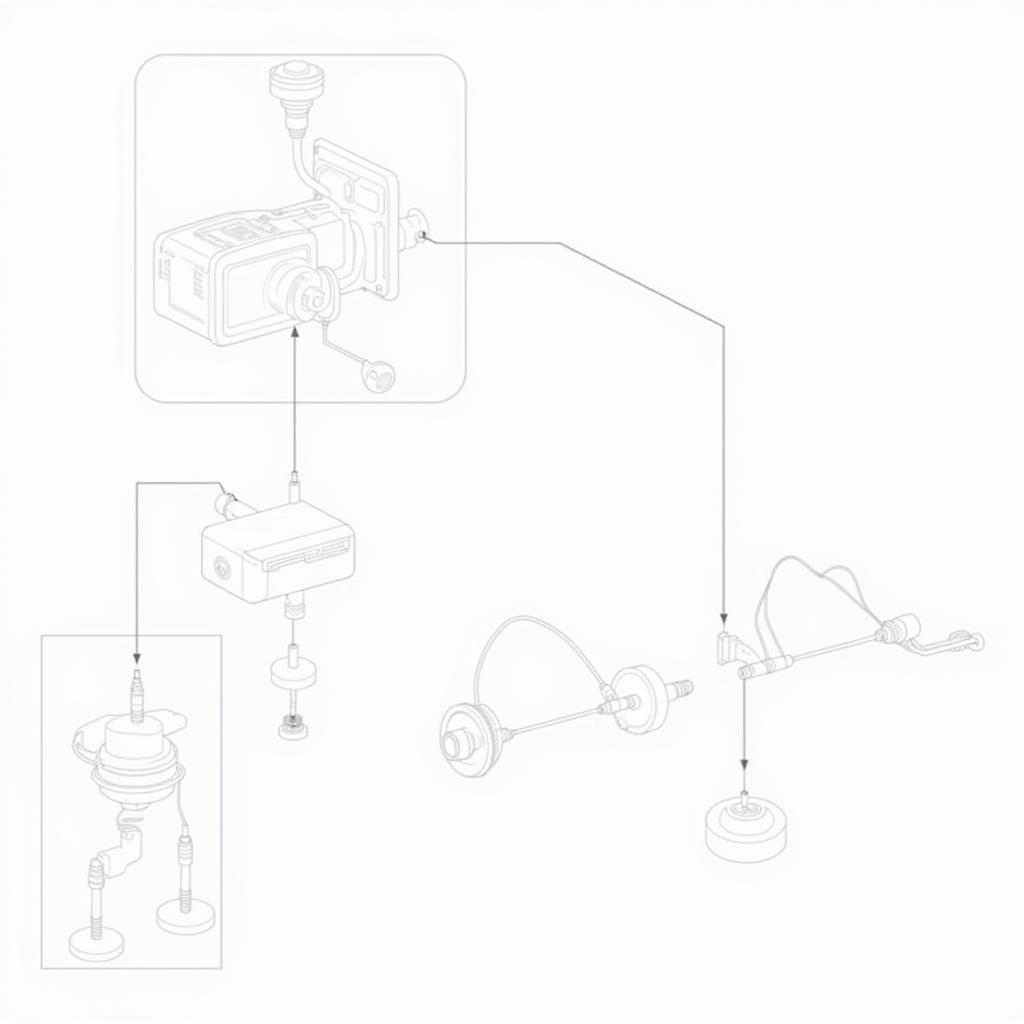The anti-lock brake system (ABS) warning light on your dashboard is a crucial safety indicator. When illuminated, it signals a potential issue with your vehicle’s ABS, a system designed to prevent wheel lock-up during braking and improve control.
Understanding Your ABS System
Before delving into the warning light, it’s helpful to understand how the ABS functions. Utilizing sensors at each wheel, the ABS monitors wheel speed during braking. If a wheel begins to lock up, indicating a loss of traction, the ABS automatically modulates the brake pressure to that specific wheel, preventing skidding and allowing you to maintain steering control.
Common Causes of the ABS Warning Light
The illumination of the ABS warning light can stem from several reasons, ranging in severity. Here are some of the most common culprits:
- Faulty ABS Wheel Speed Sensor: These sensors play a vital role in relaying wheel speed data to the ABS control module. A malfunctioning sensor can disrupt this communication, triggering the warning light.
- Damaged ABS Tone Ring: The ABS tone ring, often located on the wheel bearing, works in tandem with the wheel speed sensor. Damage to this ring can lead to inaccurate readings, prompting the ABS light.
- Malfunctioning ABS Control Module: This module acts as the brain of the ABS system. A faulty module might misinterpret data or fail to command the system correctly, illuminating the warning light.
- Low Brake Fluid Level: While a low brake fluid level can trigger the general brake warning light, it can also affect the ABS system and illuminate the ABS light concurrently.
- Electrical Issues: Wiring problems, such as loose connections or damaged wires within the ABS system, can disrupt communication and trigger the warning light.
What to Do When Your ABS Light Turns On
If your ABS warning light illuminates, it’s crucial to address the issue promptly. While your conventional braking system should still function, the ABS safety net is compromised.
- Safety Check: Find a safe location to pull over and check your brake fluid level. If it’s significantly low, refrain from driving and contact a qualified mechanic immediately.
- Visual Inspection: Carefully examine the visible components of your ABS system, including the wiring and connections near the wheels. Look for any signs of damage, wear, or disconnections.
- Professional Diagnosis: If a visual inspection doesn’t reveal an obvious issue, it’s essential to have your vehicle diagnosed by a qualified mechanic specializing in ABS systems. They possess the diagnostic tools and expertise to pinpoint the root cause.
Remote Diagnostics and Software Solutions
In today’s technologically advanced automotive landscape, remote diagnostics and software solutions play a significant role in addressing ABS warning light issues.
As an expert in automotive electrical engineering, specializing in remote diagnostics, programming, and software-based automotive solutions, I leverage cutting-edge technology to identify and rectify ABS issues remotely. This involves connecting to your vehicle’s onboard computer system, analyzing diagnostic trouble codes, and performing software updates or reprogramming if necessary.
The Importance of Timely ABS Repair
Addressing ABS warning light issues promptly is paramount for ensuring your safety and the optimal performance of your vehicle.
“Ignoring an ABS warning light is akin to driving without a safety net,” says John Smith, a veteran automotive engineer with over 20 years of experience. “The ABS system is engineered to provide crucial stability and control during emergency braking situations, potentially preventing accidents.”
 Components of an ABS System
Components of an ABS System
Frequently Asked Questions
Q: Can I continue driving with the ABS light on?
A: While your conventional brakes should still work, the ABS functionality is compromised. It’s crucial to have the issue addressed as soon as possible to ensure your safety.
Q: Is it safe to check my own brake fluid?
A: Yes, but always consult your owner’s manual for the correct procedure and location of the brake fluid reservoir.
Q: How often should the ABS system be serviced?
A: While there’s no set service interval for the ABS system, it’s generally recommended to have it inspected annually or as part of your vehicle’s regular maintenance.
Q: Can I reset the ABS warning light myself?
A: While it’s possible to reset the light temporarily using a code reader, it’s crucial to address the underlying issue causing the light to illuminate in the first place.
Q: How long does it take to repair an ABS system?
A: The repair time depends on the complexity of the issue. Simple fixes like sensor replacements can take less than an hour, while more involved repairs involving the ABS module might require more time.
Conclusion
The ABS warning light serves as a vital safety indicator, alerting you to potential issues with your vehicle’s anti-lock brake system. Addressing these issues promptly through professional diagnostics and timely repairs ensures the optimal performance of your ABS system and, most importantly, your safety on the road.
